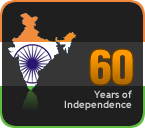The story ‘Gift of the Magi’ by O. Henry, is an ideal example for this. I am sure everyone must have read this story. For those who have not, here is a short summary. A young couple, very much in love, but very poor, got married and were happy together. For their first Christmas, they each wanted to give the other what he or she wanted most, or wished to have. The girl’s pride and joy was her long and beautiful hair. She had often seen a hair clip in a shop display, and wished she could buy it. The young man had a pocket watch given to him by his father which he valued very much, and hoped to buy a chain for it some day when he could afford it. Each one wanted to fulfil the other’s wish. So the girl had her long hair cut, sold it to the wigmaker, and with that money she bought the watch chain for her husband, had it packed and ready for him. The young man sold his watch and bought the hair clip his wife had been admiring. And when each saw the other’s gift they were so moved at the depth of love that had prompted such great sacrifices.
This kind of love is so selfless, caring and wanting to fulfil only the loved one’s need. .
There are different kinds of love – the love a mother feels for her child, which is different from the love a father feels for the child. They both want to give and do the best they can afford. They are both ready to sacrifice everything and anything for the child’s sake - the mother taking care of the child’s present needs and at times fanciful wishes, whereas the father sacrifices his luxuries to give his children a good education and a happy worry –less future. The bonding between brothers and sisters is also a certain kind of love, ready to help one another in any situation, even at risk to oneself.
The love between man and woman started with Adam and Eve, and will go on for ever, as long as there are Adams and Eves. This is a passionate love, wanting to be in each other’s company all the time, not willing to share or include anyone else. A saying in Thamizh goes, which translated means ‘Desire lasts for 60 days and infatuation for 30 days” (Aasai 60 naal, moham muppathu naal’ ). Love goes beyond all this. This kind of love which is from the heart lasts for ever. There is a Chinese saying, “Love marriage is like a kettle full of boiling water. With time this will become tepid, whereas an arranged marriage is a kettle full of cold fire set on a slow fire, to get to boiling point. This means the love will go on forever. In the bygone days there were child marriages with the couple growing up together in all phases of life. And when they reach old age, their love for each other is evident in all their spoken words and caring actions. My own parents stayed married for 70 years. I know how much they cared and respected each other’s feelings and thoughts. This did not mean they had no verbal fights or disagreements. Their love for each other was above all this.
Another couple, who were our friends, was the Warriers. Theirs was a love marriage in the 1940s. I have never seen a couple like them, so soft-spoken with each other, always caring for each other’s needs, and they stayed married till the end. An ideal love story.

Love for animals is another kind of love. Children who love pets are willing to go to any lengths to safeguard them. I remember how my granddaughters Parvati and Swati grieved when their father decided to give away Simba, one of their dogs, because he was a half-breed. They both, just young children, cried so much, that he had to drop the idea.
There are also cases of animals loving their masters so much that they are willing to die for them, and with them. I remember reading in the newspapers how an elephant sensing his mahout was dead, stood by his side day and night without food and water, till he too dropped dead. An Arab went on a mission on his horse. While returning, far from home, he head a heart attack and died. The horse brought the dead Arab home, not by carrying him on his back, but by holding his master by the belt with his teeth. Once he reached home, the horse too fell dead. A horse can go for miles with people riding him, but cannot carry anyone with his teeth.
How much the horse must have loved his master.
Love for one’s homeland is another aspect in this wide word – LOVE. You must have heard of the small Dutch boy who kept his country from being flooded by plugging the hole in the dyke with his finger for a whole night, till help came in the morning.
Love is Bhakthi – devotion to God, where the person forgets every need, and lives only to worship and serve God. There are many examples – to name a few, Kabir, Surdas, Tulsidas, Meera, Thyagaraja and Andal. All of them served god by singing His praises.
Love is all-embracing, ever forgiving, ever remembering, ever thinking of doing good to the loved ones, ever omnipotent, and that is God.
Love is God.




